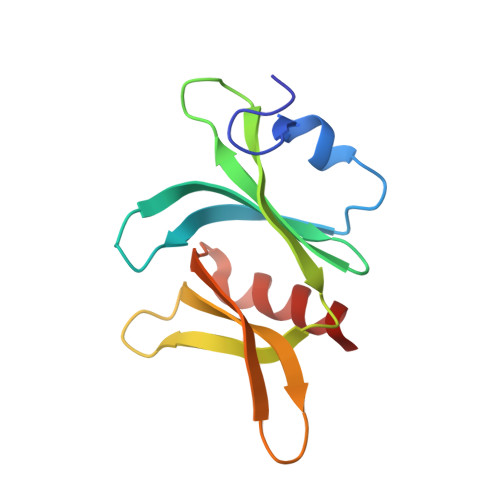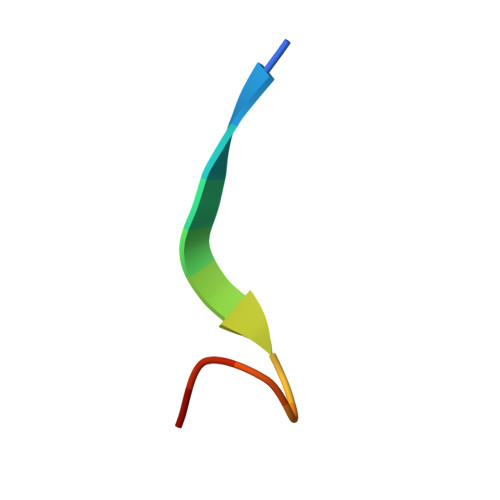Cargo selective vesicle tethering: The structural basis for binding of specific cargo proteins by the Golgi tether component TBC1D23.
Cattin-Ortola, J., Kaufman, J.G.G., Gillingham, A.K., Wagstaff, J.L., Peak-Chew, S.Y., Stevens, T.J., Boulanger, J., Owen, D.J., Munro, S.(2024) Sci Adv 10: eadl0608-eadl0608
- PubMed: 38552021
- DOI: https://doi.org/10.1126/sciadv.adl0608
- Primary Citation of Related Structures:
8QQF - PubMed Abstract:
The Golgi-localized golgins golgin-97 and golgin-245 capture transport vesicles arriving from endosomes via the protein TBC1D23. The amino-terminal domain of TBC1D23 binds to the golgins, and the carboxyl-terminal domain of TBC1D23 captures the vesicles, but how it recognizes specific vesicles was unclear. A search for binding partners of the carboxyl-terminal domain unexpectedly revealed direct binding to carboxypeptidase D and syntaxin-16, known cargo proteins of the captured vesicles. Binding is via a threonine-leucine-tyrosine (TLY) sequence present in both proteins next to an acidic cluster. A crystal structure reveals how this acidic TLY motif binds to TBC1D23. An acidic TLY motif is also present in the tails of other endosome-to-Golgi cargo, and these also bind TBC1D23. Structure-guided mutations in the carboxyl-terminal domain that disrupt motif binding in vitro also block vesicle capture in vivo. Thus, TBC1D23 attached to golgin-97 and golgin-245 captures vesicles by a previously undescribed mechanism: the recognition of a motif shared by cargo proteins carried by the vesicle.
Organizational Affiliation:
MRC Laboratory of Molecular Biology, Francis Crick Avenue, Cambridge CB2 0QH, UK.

















